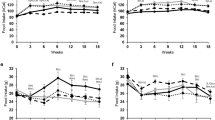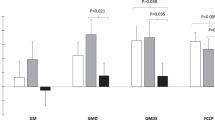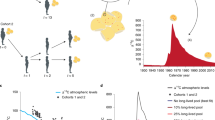Abstract
Age is associated with an increase in body fat mass and a decrease of protein mass. As body substrate turnover is under insulin control, defects in insulin secretion and/or action may in part account for these changes. As regards secretion, current evidence suggest that no clear defect in insulin secretion is found in the aged. The wide spectrum of glucose tolerance of the elderly may be associated with different patterns of insulin secretion. Insulin sensitivity to glucose metabolism is more or less normal in the aged, despite subtle delays in the onset of its action. Normalization of the data by either body weight or lean body mass is important in defining the insulin sensitivity of the elderly. Increased rates of free fatty acid (FFA) flux and oxidation rates have been found in healthy elderly subjects, both when post-absorptive and during hyperinsulinemia. These differences however disappeared following normalization by fat mass, suggesting that FFA kinetics reflect the established changes in fat mass. Thus, the mechanism(s) leading to an increase in the fat mass in elderly cannot simply be derived from studies of fat kinetics. The operation of the Randle cycle (ie, inverse relationships between fat and glucose oxidation) in the elderly has also been suggested. Finally, the insulin effects on whole-body amino acid and protein metabolism do not seem to be impaired in the aged. However, in the human muscle a decreased synthesis of contractile as well as mitochondrial proteins was found, in association with decreased specific gene expression. The degree of physical activity probably interacts with these changes, possibly playing a causative role. The possible interaction between insulin and exercise in the maintenance of muscle mass in the elderly needs to be studied further.
European Journal of Clinical Nutrition (2000) 54, Suppl 3, S126–S130
This is a preview of subscription content, access via your institution
Access options
Subscribe to this journal
Receive 12 print issues and online access
$259.00 per year
only $21.58 per issue
Buy this article
- Purchase on Springer Link
- Instant access to full article PDF
Prices may be subject to local taxes which are calculated during checkout
Similar content being viewed by others
Author information
Authors and Affiliations
Corresponding author
Rights and permissions
About this article
Cite this article
Tessari, P. Role of insulin in age-related changes in macronutrient metabolism. Eur J Clin Nutr 54 (Suppl 3), S126–S130 (2000). https://doi.org/10.1038/sj.ejcn.1601034
Published:
Issue Date:
DOI: https://doi.org/10.1038/sj.ejcn.1601034



